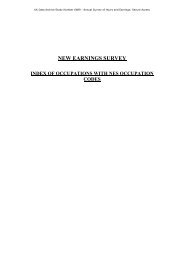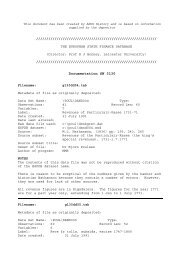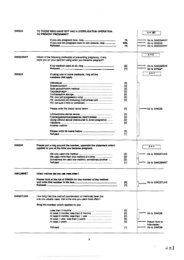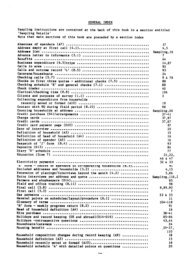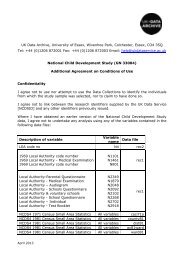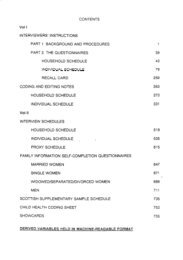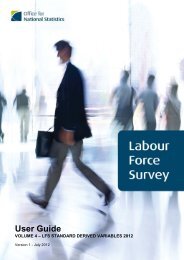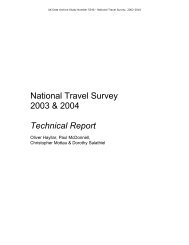ESDS Annual Report, 2008-2009
ESDS Annual Report, 2008-2009
ESDS Annual Report, 2008-2009
You also want an ePaper? Increase the reach of your titles
YUMPU automatically turns print PDFs into web optimized ePapers that Google loves.
<strong>ESDS</strong> Qualidata<br />
Re-using <strong>ESDS</strong> Qualidata: teaching the researchers of the future<br />
Jo Haynes, Lecturer at the University of Bristol, has<br />
been using numerous data collections from <strong>ESDS</strong><br />
Qualidata to support her teaching of qualitative<br />
research methods for several years. She has taught<br />
over 65 MA and Ph.D. students using this material.<br />
A key motivation has been her desire to provide<br />
students with data, enabling more teaching time to<br />
focus on developing skills in data analysis.<br />
Jo uses studies with diverse topics such as Creating<br />
Citizen-Consumers: Changing Relationships and<br />
Identifications, 2003-2005 (SN 5590); Consumption,<br />
Lifestyle and Identity: Reading the New Men’s Lifestyle<br />
Magazines, 1985-1997 (SN 4543); Context and Motive<br />
in the Perpetuation of Racial Harassment and Violence<br />
in North Staffordshire, 2004 (SN 5274); and British<br />
Migrants in Spain: the extent and nature of social<br />
integration, 2003-2005 (SN 5271). Selection criteria<br />
have included data quality and the ability to divide<br />
the dataset into sub-samples of a manageable size for<br />
student projects (e.g. by participant characteristics,<br />
geography, or other features). Students are then asked<br />
to write 4,000 word reports based on their analyses of<br />
these sub-samples. There are challenges with having<br />
students re-use existing data: for example, the quality<br />
and amount of supporting material describing the<br />
original research varies across the collections.<br />
The key benefits of re-using data for students – the<br />
researchers of the future - are the opportunities it<br />
provides to evaluate critically the design, execution<br />
and conclusions of the original study and to<br />
practice developing their own new rationales for<br />
reinterpreting data. She has been impressed by<br />
students’ creativity in generating new questions<br />
for existing data, sometimes related to the initial<br />
topic but deepening its focus and, in other cases,<br />
asking new questions altogether. For example,<br />
in the study of British migration to Spain, the<br />
original questions addressed trends, motivations,<br />
and identity of British migrants to Costa del Sol,<br />
finding a lack of integration of migrants within<br />
the local Spanish community. The student project<br />
re-analysed these data by exploring the reproduction<br />
of class differences, looking<br />
at how migrants constructed<br />
and reconstructed class in<br />
their new communities by<br />
distinguishing themselves<br />
not only from tourists, but<br />
from other expatriate Britons<br />
as well.<br />
(This text is based on a<br />
presentation given by Jo<br />
Haynes for a National Centre<br />
for Research Methods (NCRM)<br />
Train the Trainers workshop,<br />
13 July <strong>2009</strong> in London.)<br />
E C O N O M I C A N D S O C I A L DATA S E RV I C E A N N UA L R E P O RT AU G U S T 2 0 0 8 – J U LY 2 0 0 9 9<br />
www.esds.ac.uk/qualidata




